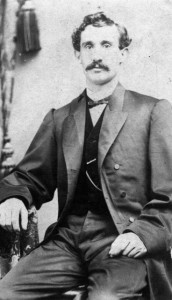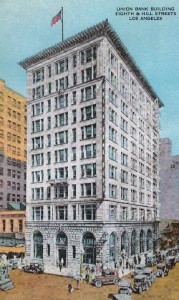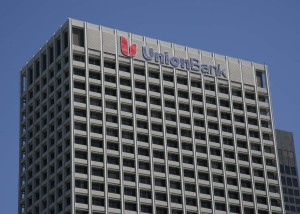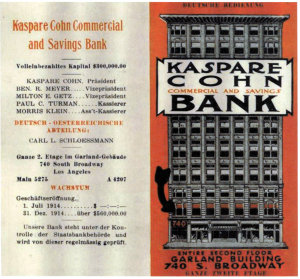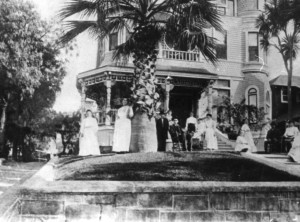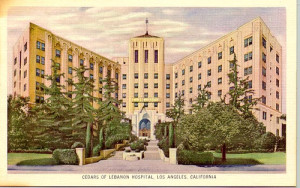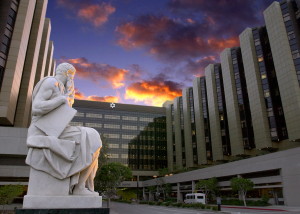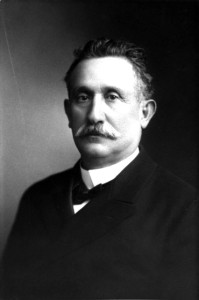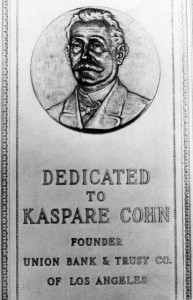Kaspare Cohn
Values Codes I – H – E – L – P
“If Kaspare Cohn’s name was kept on his bank and on the hospitals he created, he would be the best known Jewish pioneer of Los Angeles.”
— William M. Kramer
Kaspare Cohn was born in Loebau, Prussia, in 1839.
At the invitation of his cousin, Harris Newmark, Cohn arrived in the United States and headed to Los Angeles where he arrived in 1859, at the age of 20.
In Los Angeles he immediately went to work in Harris Newmark’s store, sleeping on the premises.
In 1864, Kaspare Cohn left the employment of his uncle and went north to Red Bluff, California, where he opened a crockery store. He returned to Los Angeles in 1866.
In Los Angeles, he entered into a partnership with Harris Newmark and his brother Samuel Cohn, establishing a grocery and dry goods wholesale-retail business which prospered.
In 1879, H. Newmark & Company was dissolved.
A new partnership of Harris Newmark, Kaspare Cohn, and Morris A. Newmark thrived.
A forward looking man, when the first telephone directory of Los Angeles came out, Kaspare Cohn’s number was listed as “43.”
Another firm was created, K. Cohn & Company, specializing in the collection and shipping of hides and wool.
In 1896, Kaspare Cohn was involved in the creation of the Pacific Wool Company, which processed wool in “the most modern of ways.” Previously, all raw wool had to be shipped to San Francisco.
Real Estate
Like many pioneer merchants, Kaspare Cohn invested in real estate.
In 1887, records indicate he held $440 worth of real estate. In 1894 his property holdings were valued at $44, 530.
In 1899 Harris Newmark and Kaspare Cohn owned and developed what is now known as the City of Montebello.
They also invested $85,000 in the Santa Anita Ranch.
Two years later, they sold the ranch to “Lucky” Baldwin for $200,000 – in cash.
Banking
Kaspare Cohn dealt with Basques who raised sheep north of Los Angeles.
Many of them would deposit their money with Cohn, creating an unofficial bank.
Kaspare Cohn Commercial & Savings Bank was officially incorporated in 1914.
After Cohn’s death in 1916 his two sons changed the name of the bank to the Union Bank & Trust Company.
Utilities
Kaspare Cohn was very interested in Hydro-electric plants and natural gas.
He held interest in the San Gabriel Light & Power Company, the Southern California Gas Company, the Midway Gas Co., and more.
In 1889, Cohn was listed as a Director of the Lowe Gas & Electric Company of Los Angeles.
The Pacific Light & Power Company, incorporated in 1902, included Cohn as a Director.
Community
When Congregation B’nai B’rith (now Wilshire Boulevard Temple) dedicated its second building at a cornerstone laying in 1896, Cohn and others contributed the stained glass windows.
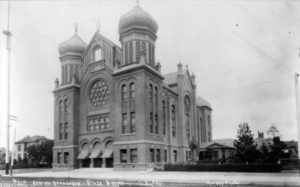
Congregation B’nai B’rith, Los Angeles, 2nd building at 9th & Hope
In 1900, Cohn was elected President of Congregation B’nai B’rith, a position he held for ten years. (He stepped down as President of in 1910, refusing to accept re-election.)
In 1902, Cohn led the movement to create a new Jewish cemetery in a “better” location. He purchased and donated 30 acres of land in East Los Angeles on Whittier Boulevard.
Arrangements were made to transfer all remains and monuments from the old cemetery in Chavez Ravine to the current cemetery site in East Los Angeles, now called Home of Peace.
Cohn supported the Hebrew Benevolent Society throughout his life
He was also “Special Counselor” to the Ladies Hebrew Benevolent Society.
Mr. and Mrs. Cohn were part of the organizing committee for the California Jewish Orphans Home, which has evolved into Vista del Mar.
Cohn was a donor to the Hebrew Sheltering Association, today known as the Los Angeles Jewish Home (formerly known as the Jewish Home for the Aging.)
In 1869, he helped in the formation of the Los Angeles Social Club and the California Club.
The Los Angeles Hospitals of Kaspare Cohn
In 1902, Cohn purchased and offered a two story house at 1443 Carroll Street to be converted into a hospital.
The Kaspare Cohn Hospital was dedicated that same year.
In its earliest years, it was a consumptive hospital for tuberculosis, run by the Jewish Consumptive Relief Organization.
However, the City of Los Angeles decided to remove all tubercular facilities from within the Los Angeles City Limits.
The Jewish Consumptive Relief Organization purchased 10 acres in Duarte, sixteen miles to the east, which eventually became the City of Hope.
The Kaspare Cohn Hospital reverted to a general “Jewish” hospital.
In 1910, the hospital relocated to a new brick building on Whittier Boulevard near Boyle Heights.
At the annual meeting of 1913, Cohn presented his check for $5,300 that wiped out all the debts of the hospital.
When the hospital moved to its third location, an even larger building at 4833 Fountain Avenue, the family requested that its name be changed to Cedars of Lebanon Hospital.
Today Cedars of Lebanon and the earlier Sinai Hospital make up the world-renowned Cedar-Sinai Medial Center.
Family
Kaspare Cohn married Hulda Newmark in 1872. She was the daughter of Joseph P. Newmark, brother of Harris Newmark.
Kaspare Cohn died in 1916.
He was survived by his wife and their two daughters: Mrs. Ben Meyer and Mrs. Milton E. Getz.
“The death of Kaspare Cohn marks the passing of one of the men who helped make Southern California what it is today. Kaspare Cohn has been named as one of the men directly responsible for the development of Southern California.”
— The Los Angeles Evening Herald
Sources
- William M. Kramer, “Kaspare Cohn: A Man Who Helped Make Southern California, Part 1,” Western States Jewish History 23/3.
- William M. Kramer, “Kaspare Cohn: A Man Who Helped Make Southern California, Part 2,”
- Western States Jewish History 23/4.
- Norton B. Stern, “Kaspare Cohn: Notes from a Session with Edwin J. Loeb,” Western States Jewish History 41/3.
- Norton B. Stern, “Groundbreaking for the Kaspare Cohn Hospital “Cedars of Lebanon,” Los Angeles, 1929,” Western States Jewish History 41/3.
- William M. Kramer, “Kaspare Cohn: A Tribute; Kramer,” Western States Jewish History 23/4.
